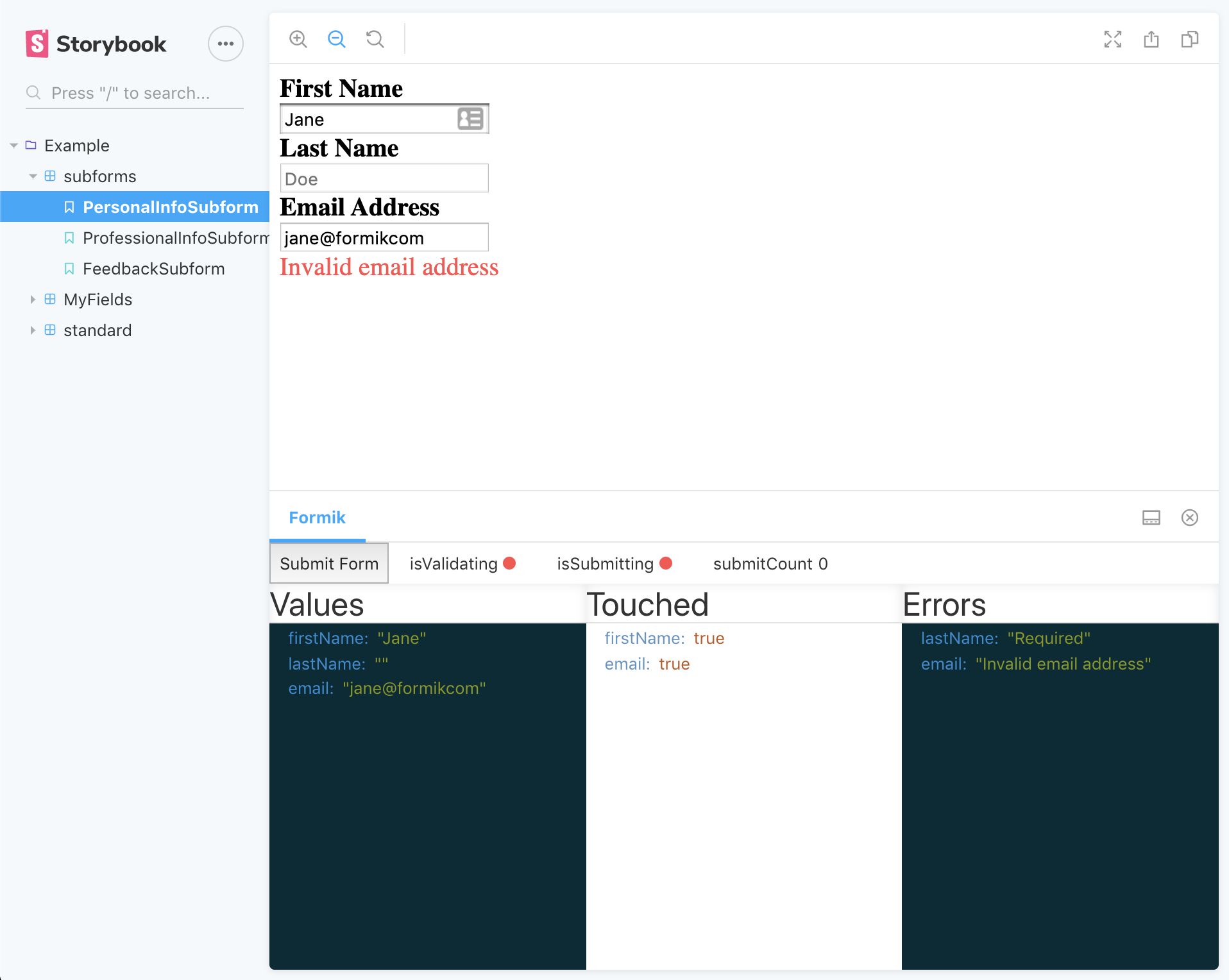A Storybook Addon and Decorator to wrap Formik Fields and track their state in a Panel.
You can see the example stories in action here.
Thanks to @jaredpalmer for giving us the amazing formik library and making forms great again.
npm install --save-dev storybook-formikThen register the addon in .storybook/main.js
module.exports = {
stories: ['../stories/**/*.stories.tsx'],
addons: ['storybook-formik/register'],
};Suppose you split your forms into smaller, re-usable components and these 'subforms' rely on formik context, each of these sub-forms may be used to build up a larger form, but you still want to test and run them independently. You can use the withFormik decorator so that we can wrap the subform in a Formik component, which will pass down the context as normal.
Given a simple subform:
import React from 'react';
import { Field } from 'formik';
const PersonalInfoSubform = () => (
<div>
<Field name="forename" type="input" />
<Field name="surname" type="input" />
</div>
);
export default PersonalInfoSubform;You add the withFormik decorator to your stories and can pass any Formik props as a parameter to the individual story.
export const personalInfoSubform = () => (
<>
<p>
The decorator can wrap Components that include Fields (or anything else
expecting Formik context). This allows us to better componentise our
larger forms.
</p>
<PersonalInfoSubForm />
</>
);
personalInfoSubform.decorators = [withFormik];
// can use the DecoratorParams type and pass a type for type-safety of initialValues
const personalInfoParams: DecoratorParams<PersonalInfo> = {
formik: {
initialValues: personalInfoInitialValues,
validationSchema: personalInfoValidationSchema,
},
};
personalInfoSubform.parameters = personalInfoParams;This gives you the benefit of rendering formik Fields that are expecting formik context, but also to track the key formik state within the storybook panel below.
See the example stories for further examples
Example with the storiesOf syntax.
import { storiesOf } from '@storybook/react';
import withFormik from 'storybook-formik';
import PersonalInfoSubform from '<your_component_path>/PersonalInfoSubform';
storiesOf('Example', module)
.addDecorator(withFormik)
.add('default', () => <PersonalInfoSubform />, {
formik: {
initialValues: {
forename: 'John',
surname: 'Johnerson',
},
},
});You can pass any Formik component props (initialValues, validationSchema, validateOnBlur, etc) as arguments to a story.
These props must be passed under the formik parameter key.
If no initial values are supplied, {} will be used.
export const myTextInput = () => (
<MyTextInput
name="formikTweet"
label="Describe formik in 80 characters"
placeholder="I love formik because..."
/>
);
myTextInput.parameters = {
formik: {
initialValues: {
formikTweet: '',
},
validationSchema: someSchema,
onSubmit: v => console.log('I want to log these... ', v),
},
};In time, I will add more mature examples that show the usefulness of the subforms pattern on a larger scale. If anyone has any good examples then please do submit them.
